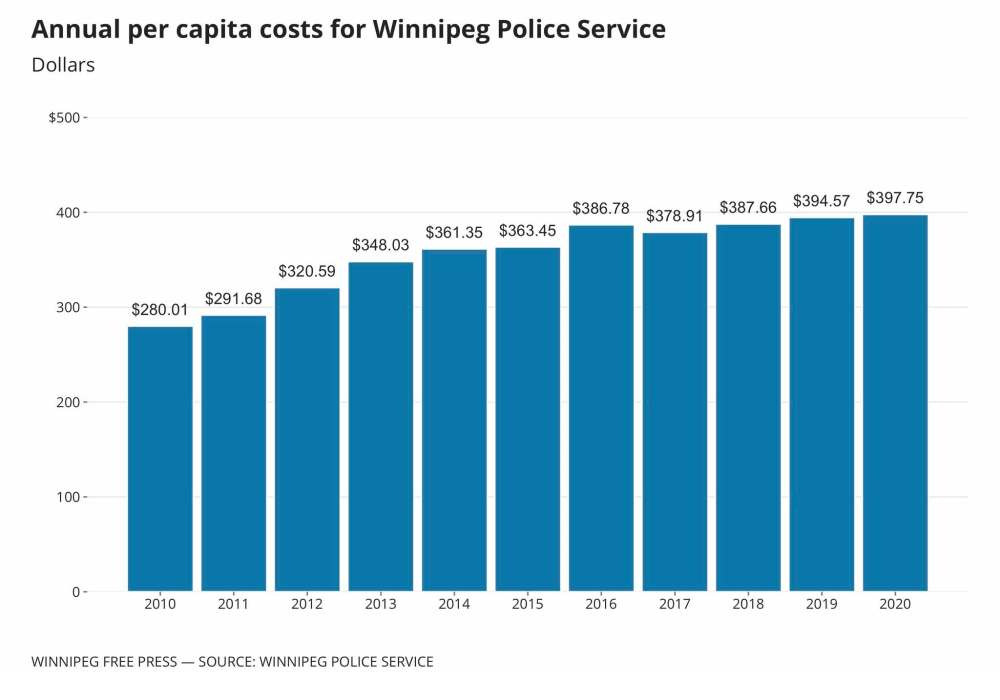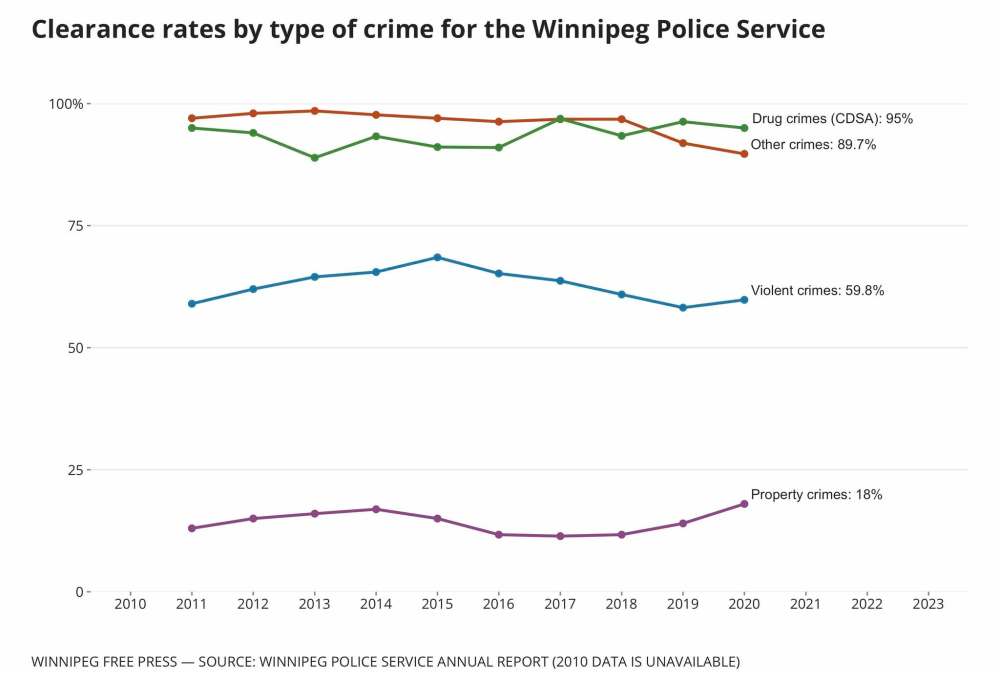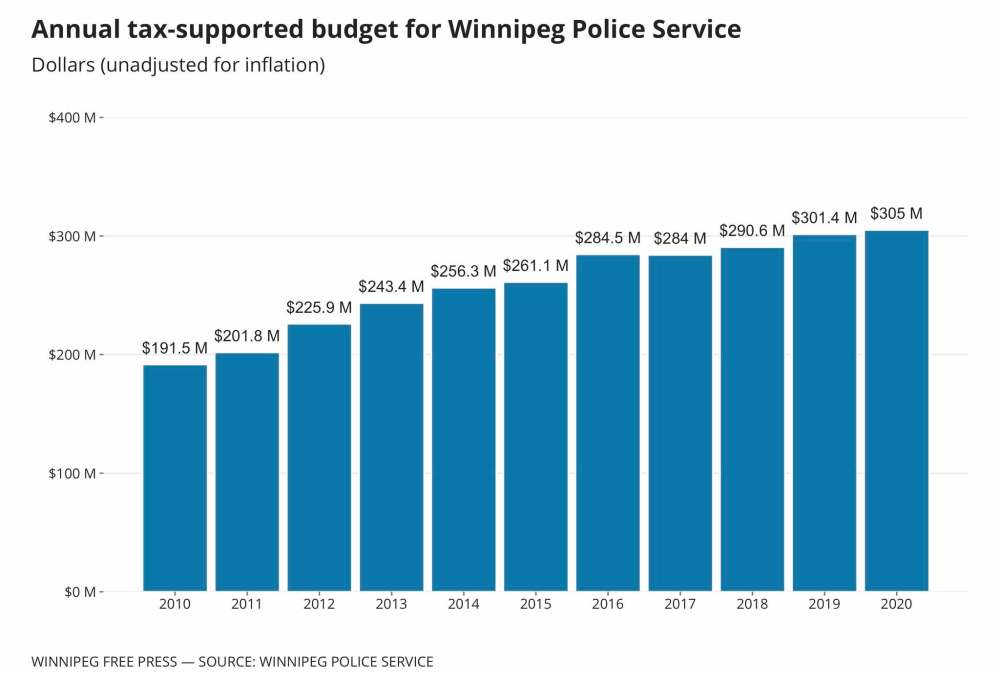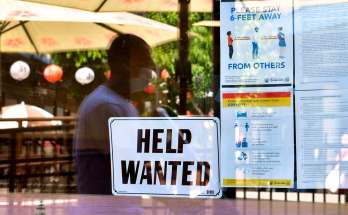Crime dropped during pandemic, but police ‘worked from pillar to post’
Read this article for free:
or
Already have an account? Log in here »
To continue reading, please subscribe:
Monthly Digital Subscription
$0 for the first 4 weeks*
- Enjoy unlimited reading on winnipegfreepress.com
- Read the E-Edition, our digital replica newspaper
- Access News Break, our award-winning app
- Play interactive puzzles
*No charge for 4 weeks then price increases to the regular rate of $19.00 plus GST every four weeks. Offer available to new and qualified returning subscribers only. Cancel any time.
Monthly Digital Subscription
$4.75/week*
- Enjoy unlimited reading on winnipegfreepress.com
- Read the E-Edition, our digital replica newspaper
- Access News Break, our award-winning app
- Play interactive puzzles
*Billed as $19 plus GST every four weeks. Cancel any time.
To continue reading, please subscribe:
Add Free Press access to your Brandon Sun subscription for only an additional
$1 for the first 4 weeks*
*Your next subscription payment will increase by $1.00 and you will be charged $16.99 plus GST for four weeks. After four weeks, your payment will increase to $23.99 plus GST every four weeks.
Read unlimited articles for free today:
or
Already have an account? Log in here »
Hey there, time traveller!
This article was published 27/07/2021 (1600 days ago), so information in it may no longer be current.
While the amount of crime dropped in Winnipeg last year, the pandemic took its toll on police officers.
“The amount of burnout and PTSD and levels of anxiety are increased significantly … That’s as a result of members being worked from pillar to post. They’re going from call to call to call and there’s no time for proactive policing,” said Moe Sabourin, president of the Winnipeg Police Association.
“It’s the staffing levels that are contributing to a lot of internal strife within the police service.”
While calls for service fell by 5.8 per cent in 2020, the number of police dispatches rose to 241,717 from 231,670. The figures were contained in the service’s 2020 statistical report, which was released Tuesday.
The annual report notes WPS had 1,356 total officers and 561 civilian members, including cadets. That translates to a rate of 176.8 officers per 100,000 Winnipeggers, down from 200.5 per 100,000 in 2015.
Chief Danny Smyth said the service is working on programs to help officers cope with the mental health toll of their jobs, but he expects the number of officers will remain about the same.
“We’re always balancing budgetary constraint with the number of officers that we have … It’s a constant balancing act,” he said.
Officers scrambled to respond to almost 19,000 wellness checks (up 12.4 per cent from 2019), which were linked to COVID-19 conditions. It was the type of call police responded to the most. Smyth said the responses included helping Winnipeggers check on friends and family they weren’t allowed to visit.
“I think, in part, it’s the environment we’re in right now, where people aren’t as mobile and there’s a layering of conditions here between drugs, mental health and just people being isolated from their friends and family,” said Smyth.
The total number of crimes committed in the city fell 10 per cent from 2019, while property crime fell 13.6 per cent. That included reductions in break-ins and vehicle thefts.
While the exact impact of COVID-19 on property crime is still being studied, Smyth suspects there is a link between its decline and the pandemic.
“We had a lot of people who were isolated and at home during the pandemic, so it stands to reason that much of the property crime that we would have seen reported was down (such as break ins and thefts) … (since) that typically happens when people are away,” he said.
Shoplifting also declined, including a drastic drop in liquor thefts, which plummeted to 774 in 2020 from 5,193 in 2019. That change occurred after heightened security measures were added; customers must provide photo ID before entering Liquor Marts.
While violent crime declined by three per cent overall last year, assaults with weapons increased by 9.1 per cent.
And, at 42, Winnipeg’s homicide rate remained high. That’s just two short of the 44 homicides that occurred during 2019, which set a record for the most local homicides in one year.
“(The rate is) almost double what we would have normally seen in years past,” said Smyth. “We still have a lot of gang activity and they’re fighting mostly over the drug trade.”
There were 22 homicides in Winnipeg during 2018; 24 in 2017; and 25 in 2016.
Smyth said assaults with weapons could easily have resulted in more fatalities last year, if not for a strong emergency response system.
Winnipeg Police Board chairman Markus Chambers said he’s concerned by the high homicide rate, which can be tough for police to combat.
“It’s very unpredictable by nature … Gang disruption is a big part of it (and) I believe the service has been doing a lot of that,” said Chambers.
Joyanne.pursaga@freepress.mb.ca
Twitter: @joyanne_pursaga
wfppdf:https://wfpquantum.s3.amazonaws.com/pdf/2021/74469_2020AR.pdf|Winnipeg Police Service 2020 Statistical Report:wfppdf
Born and raised in Winnipeg, Joyanne loves to tell the stories of this city, especially when politics is involved. Joyanne became the city hall reporter for the Winnipeg Free Press in early 2020.
Our newsroom depends on a growing audience of readers to power our journalism. If you are not a paid reader, please consider becoming a subscriber.
Our newsroom depends on its audience of readers to power our journalism. Thank you for your support.











